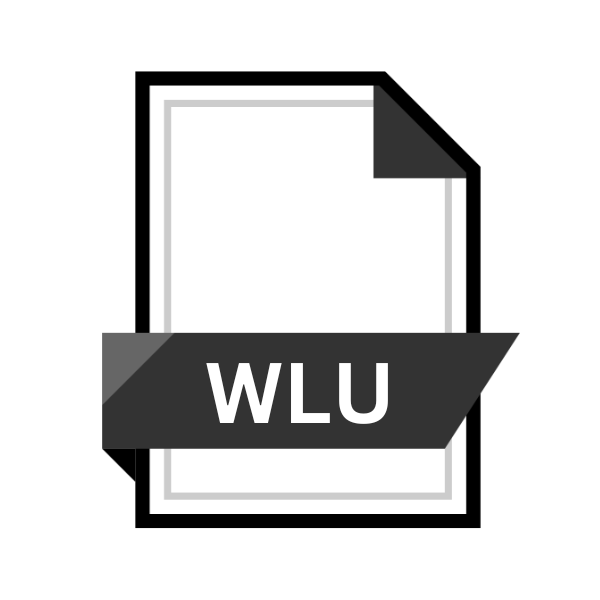.WLU File Extension

Windows Legacy Update
| Developer | Black Wing Cat |
| Popularity | |
| Category | System Files |
| Format | .WLU |
| Cross Platform | Update Soon |
What is an WLU file?
.WLU files, known as Windows Legacy Update files, are proprietary data files primarily associated with Windows operating systems.
These files often contain crucial system updates, patches, or configuration data necessary for maintaining or enhancing the functionality of Windows-based applications and components.
More Information.
Initially conceived as a mechanism to streamline the update process, .WLU files served as a convenient way for system administrators and users to deploy critical updates across multiple Windows installations.
These files encapsulated specific changes or enhancements tailored to address known issues, vulnerabilities, or compatibility issues within the Windows ecosystem.
Origin Of This File.
The origin of .WLU files can be traced back to the evolution of Windows operating systems, particularly during the era of Windows XP and its predecessors.
Microsoft introduced these files as a means to efficiently distribute and apply updates, ensuring the stability, security, and performance of Windows systems.
File Structure Technical Specification.
.WLU files exhibit a structured format designed to facilitate the seamless integration of updates into existing Windows configurations.
While the specific structure may vary depending on the nature of the update, common components often include metadata, binaries, libraries, configuration files, and instructions for deployment.
Technical specifications of .WLU files encompass various parameters such as version compatibility, update dependencies, cryptographic signatures for integrity verification, and installation routines tailored to different Windows environments.
How to Convert the File?
Converting .WLU files to alternative formats may not be a straightforward process due to their proprietary nature and specific use case within the Windows ecosystem. Certain techniques and tools can facilitate the extraction or conversion of .WLU content for specific purposes.
- Extraction Utilities: Specialized extraction utilities designed to unpack .WLU files can extract individual components such as executable binaries, configuration files, or resources for further processing or analysis.
- Custom Scripting: Developing custom scripts or automation routines can enable users to parse .WLU files and extract relevant data in a format compatible with alternative platforms or applications.
- Reverse Engineering: In cases where source code or documentation is unavailable, reverse engineering techniques may be employed to decipher the internal structure of .WLU files and develop conversion mechanisms tailored to specific requirements.
Advantages And Disadvantages.
Advantage:
- Efficient Update Deployment: .WLU files enable administrators to efficiently deploy updates across multiple Windows systems, reducing the time and resources required for manual installations.
- Enhanced System Stability: By addressing known issues and vulnerabilities, .WLU updates contribute to the overall stability and security of Windows environments, minimizing the risk of system failures or exploits.
- Simplified Maintenance: The encapsulation of updates within .WLU files simplify the maintenance process, allowing users to apply patches and enhancements without the need for extensive manual intervention.
Disadvantage:
- Proprietary Nature: .WLU files are proprietary to Microsoft Windows, limiting their compatibility and interoperability with non-Windows systems or open-source software.
- Dependency Management: Complex dependencies inherent to certain updates may pose challenges during installation, requiring careful planning and coordination to ensure compatibility with existing system configurations.
- Versioning Issues: Incompatibilities between .WLU file versions and target Windows installations can lead to installation failures or unexpected behavior, necessitating thorough testing and validation procedures.
How to Open WLU?
Open In Windows
- Native Support: .WLU files are designed to be opened and executed natively on Windows operating systems. Users can simply double-click on the .WLU file, and if associated correctly, it will trigger the update or installation process within the Windows environment.
- Third-Party Tools: In some cases, third-party software or utilities may provide additional functionality for viewing or extracting content from .WLU files on Windows. These tools can assist in unpacking, analyzing, or manipulating the contents of .WLU files for advanced users or developers.
Open In Linux
- Wine: Linux users can utilize Wine, a compatibility layer that enables running Windows applications on Linux systems. By installing Wine and configuring it to handle .WLU files, users may be able to execute Windows-based update utilities or extraction tools within the Linux environment.
- Virtualization: Another approach involves running a virtual machine with a Windows guest operating system on Linux using virtualization software such as VirtualBox or VMware. Within the virtualized Windows environment, .WLU files can be opened and processed using native Windows tools or applications.
Open In MAC
- Boot Camp: macOS users can utilize Boot Camp, a built-in utility, to dual-boot their Mac devices with Windows. By booting into Windows, users can then open and execute .WLU files using native Windows tools or applications.
- CrossOver: CrossOver, a commercial compatibility layer based on Wine, offers macOS users a convenient way to run Windows software without the need for a separate Windows installation. By configuring CrossOver to handle .WLU files, users can open and process them directly within the macOS environment.
Open In Android
- Emulation: Android users can leverage emulation software such as QEMU or Limbo PC Emulator to run a virtualized instance of Windows on their Android devices. Once Windows is running, .WLU files can be opened and processed using native Windows tools or applications.
- Remote Desktop: Alternatively, Android users can remotely access a Windows system using remote desktop software such as Microsoft Remote Desktop or TeamViewer. By connecting to a Windows machine, users can open and interact with .WLU files as if they were using a native Windows environment.
Open In IOS
Remote Desktop: Similar to Android, iOS users can remotely access a Windows system using remote desktop software available on the App Store. By connecting to a Windows machine, users can open and interact with .WLU files using native Windows tools or applications running on the remote desktop session.
Open in Others
- Cross-Platform Tools: For platforms not mentioned above, such as Chrome OS or specialized embedded systems, compatibility may vary. In such cases, users can explore cross-platform tools or solutions that support running Windows applications or emulating Windows environments.
- Cloud Services: Cloud-based solutions such as Azure Virtual Machines or Amazon EC2 instances offer the flexibility to run Windows environments remotely, enabling users on diverse platforms to access and interact with .WLU files via a web browser or remote desktop connection.











